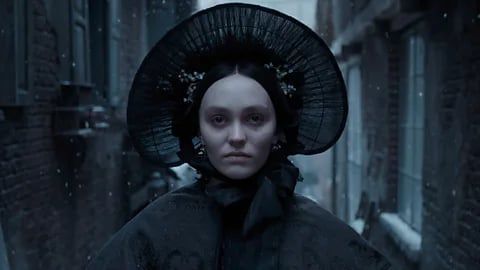
Title: Nosferatu
Director: Robert Eggers
Cast: Bill Skarsgard, Nicholas Hoult, Lily-Rose Depp, Aaron Taylor-Johnson, Emma Corrin, Willem Dafoe, Ralph Ineson, Simon McBurney
Where to watch: In theatres
Rating: ****
F.W. Murnau’s Nosferatu (1922) revolutionised vampire mythos with its eerie chiaroscuro and grotesque Count Orlok, setting a haunting cinematic standard that still influences today’s evolution of the genre. Fast forward a century, and the vampire archetype has evolved from sinister to sexy, but Nosferatu’s shadow-drenched legacy remains a haunting reminder of the genre's darker roots.
Robert Eggers’ Nosferatu is less a film and more an incantation—a dark, brooding reverie that sucks you in like a spectral undertow. With a Gothic grandeur that feels both reverent to its cinematic ancestors and boldly its own, the director has delivered a chilling masterpiece that redefines the vampire mythos for a modern audience.
Bill Skarsgård’s Count Orlok is a revelation, a figure simultaneously grotesque and magnetic. His gnarled physique, diseased pallor, and taloned menace make him a terrifying presence, yet there’s an almost tragic sensuality to his obsession with Lily-Rose Depp’s Ellen. Skarsgård’s nuanced performance resurrects the vampire not as a caricature of horror tropes but as a manifestation of eternal despair and unrelenting hunger. The film is no suave, velvet-cloaked seducer but a creature of rot and ruin—a monster whose humanity is more haunting than his fangs.
Depp, as Ellen, is the film's beating (or bleeding) heart. Her performance is an exquisite dance between innocence and corruption, pulling us into her unraveling psyche as she becomes both muse and martyr to Orlok’s dark desires. The film’s exploration of her duality—an unholy blend of purity and paganism—is where the script truly shines. Ellen’s evolution is terrifying and tragic, her final moments seared with a visceral intensity that lingers long after the credits roll.
Eggers’ attention to period detail is meticulous, with Jarin Blaschke’s cinematography bathing every frame in chiaroscuro shadows and suffocating dread. The desaturated palette often pays homage to F.W. Murnau’s 1922 silent masterpiece, yet the film pulses with modernity in its fluid camerawork and hypnotic pacing. The castle interiors, crafted by production designer Craig Lathrop, exude an oppressive, almost sentient malevolence, while Linda Muir’s costumes envelop the characters in layers of historical authenticity.
Yet, it’s not all perfection in this danse macabre. At times, the director’s penchant for visual indulgence verges on overbearing, with certain sequences lingering a beat too long in their Gothic excess. Similarly, the script’s use of Dacian—a dead Balkan language—adds an otherworldly chill but occasionally tips into pretension. And while the supporting cast, including Nicholas Hoult’s hapless Hutter and Willem Dafoe’s delightfully eccentric von Franz, deliver solid performances, their arcs feel secondary to the towering dynamic between Ellen and Orlok.
The film’s triumph lies in its tone, balancing terror and tragedy. Avoiding camp, it crafts a slow-burning dread that culminates in a horrifying, heartbreaking finale. This Nosferatu transcends Dracula’s tale, becoming a meditation on desire, death, and the inescapable pull of darkness.
Overall, the film is exquisite- haunting and terrifying - a shadowy hymn that lingers in your soul long after leaving the theatre.